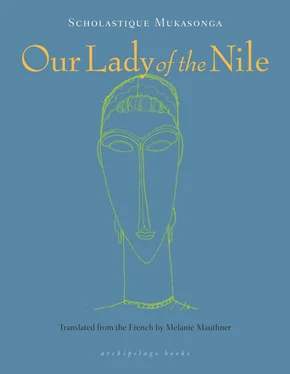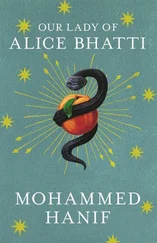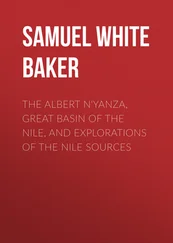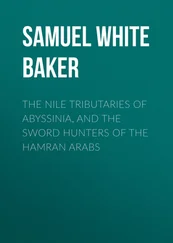A few days later, workers from the mission arrived to erect a platform between the two colossal rocks overhanging the spring. They placed the statue on it, beneath a shelter of sheet metal. It was much later that they built the lycée, two kilometers away, just as Rwanda gained independence.
Perhaps Monsignor hoped that the spring’s holy water would prove to be as miraculous as that of Lourdes. Alas no. There is only Kagabo the healer — or poisoner — who fills small black jugs shaped like a calabash with water from the spring. In these he soaks scary-looking roots, sloughed-off snake skins crushed into powder, tufts of hair from stillborns, and the dried blood from girls’ first menstruations. Concoctions to heal, or to kill, it depends.
For a long time, the photos of the unveiling ceremony of Our Lady of the Nile lined the long corridor where visitors, or parents who had requested a meeting with Mother Superior, were asked to wait. Now there was only one photograph still hanging: the one with Monsignor the Vicar Apostolic blessing the statue. Only traces of the others remained, the slightly paler marks of rectangular frames on the wall, there behind the hard wooden sofa — no cushion in sight — on which the unfortunate pupils summoned by the fearsome Mother Superior never dared to sit. Yet the photos hadn’t been destroyed. Gloriosa, Modesta, and Veronica found them one day when they were asked to clean the room at the back of the library where the archives were stacked. There, under a heap of old newspapers and magazines ( Kinyamateka, Kurerera Imana, L’Ami, Grands Lacs , etc.), they found the photos, slightly discolored and warped, some still covered by a sheet of broken glass. There was the photo of the administrator making his military salute before the statue, and the soldier behind him dipping the Belgian flag. There were the photos of the intore dancers — slightly blurred because the inept photographer tried to capture their impressive leaps in midair, which caused their sisal manes and leopard skins to be wreathed in a ghostly halo. Then there was the photo of the chiefs and their wives in all their finery, but most of these dignitaries had been crossed through with a wide stroke of red ink, and the faces of others masked by a question mark in black.
“The chiefs’ photos have suffered the social revolution ,” said Gloriosa, laughing. “A dash of ink, a slash of machete, that’s all it takes … and no more Tutsi.”
“What about the ones with a question mark?” Modesta wanted to know.
“Alas, they must be the ones who managed to flee! But now that they’re in Bujumbura or Kampala, those big chiefs have lost their cattle, and their pride. They drink water like the pariahs they’ve become. I’m taking the photos. My father will tell me who these whip masters are.”
Veronica wondered when she, too, would be crossed out with red ink, on the annual class photograph taken at the start of the school year.
The pupils of Our Lady of the Nile make their great pilgrimage in May, the Virgin Mary’s month. Pilgrimage day is a long and beautiful one, and the lycée spends many months preparing for it. Prayers are given for good weather. Mother Superior and Father Herménégilde, the chaplain, announce a novena and request that every class relay each other in the chapel to ask the Holy Virgin to chase off the clouds on that given day! After all, it’s quite possible in May: the rains become less frequent as the dry season approaches. For a whole month now, Brother Auxile has been rehearsing the hymns he’s written in honor of Our Lady of the Nile. Brother Auxile is the resident handyman, peering into the oily entrails of the electric generator, or the engines of the two supply trucks, cursing the drivers, and the servant-mechanics, in his Ghent dialect. He plays the harmonium and conducts the choir. The Belgian teachers were urged to take part in the ceremony, as were the three young Frenchmen posted here in lieu of military service. Mother Superior hinted, gently but firmly, that as it was a solemn occasion, they should wear a jacket and tie, instead of those ugly trousers they call blue jeans, and that she was counting on them to behave respectfully and set an example for the pupils. Sister Bursar spent a good part of the night in the pantry, setting aside items for the picnic: corned beef, sardines in oil, jam, Kraft cheese. You could hear the jangle of the huge bunch of keys attached to her leather belt. She counted out just enough crates of Fanta for the pupils, and a few bottles of Primus lager for the chaplain, Brother Auxile, and Father Angelo from the nearby mission. For the Rwandan Sisters, the teachers, and the school monitors, she put aside a demijohn of pineapple wine, the specialty of Sister Kizito, who jealously guards the secret recipe.
Of course Mass is endless that day, with hymns, prayers, and dozens of rosary recitations, but best of all is the wild laughter of the girls as they race and romp about, sliding down the grassy slope. Sister Angélique and Sister Rita, the school monitors, blow the hell out of their whistles, bellowing: “Watch out for the ravine!”
Mats are laid down for the picnic. It’s not like in the refectory, it’s more chaotic, everyone can sit however they like, they can squat down or stretch out, their mouths smeared with jam. The school monitors raise their arms to the sky in defeat. Mother Superior, Sister Gertrude (Mother Superior’s Rwandan deputy), Sister Bursar, Father Herménégilde, and Father Angelo all sit on folding chairs. The teachers are also allowed chairs, but the French teachers prefer to sit on the grass. Sister Rita serves the men beer — only a Rwandan woman could have such good manners. Mother Superior of course refuses the Primus she’s offered, and Sister Bursar reluctantly does the same, making do with some of Sister Kizito’s pineapple wine.
It’s rare to see an actual pilgrim mingling with the pupils, since Mother Superior aims to keep at bay any unwelcome guests who might, on a “devotional” pretext, be drawn by the sight of such a gathering of young girls. The mayor of Nyaminombe district, where the lycée is located, has prohibited access to the spring at Mother Superior’s request. Even the government minister’s wife, who invited a few girlfriends along in her Mercedes to dote on their pious daughters, has a hard time persuading the police officer to lift the barrier. But there’s one visitor Mother Superior can’t keep away, and that’s Monsieur de Fontenaille, the coffee grower. The girls are a bit scared of him. People say he lives alone in his large dilapidated villa. Most of his coffee bushes are going to seed. Nobody knows if he’s deranged or a white witch doctor as he goes about organizing digs to search for bones and skulls. His old jeep ignores the paths, jolting up and down the mountain slopes. He always breezes in, mid-picnic, sweeping off his bush hat in a theatrical gesture to greet Mother Superior, exposing his shaven head: “Please accept my deepest respects, Reverend Mother.”
She struggles to hide her annoyance: “Good day, Monsieur de Fontenaille, we weren’t expecting you. Please, don’t intrude on our pilgrimage.”
“Like you, I’m here to honor our Mother of the Nile,” he replies while turning his back to her. Slowly, he circles each mat where the girls are eating their lunches, stops near one of them, unconsciously adjusts his glasses, searches her face while nodding, pleased with himself, and begins to sketch her profile in his notebook. She’ll lower her gaze, as well-brought-up girls do, to avoid his piercing stare, then look away, yet some of the girls can’t help slipping him a sly smile. Mother Superior doesn’t dare intervene, for fear of causing an even greater scandal, but she follows the old plantation owner’s movements with apprehension. At last, he trundles to the little pool brimming with water from the spring, takes a handful of scarlet petals from one of his many jacket pockets, and throws them into the headwaters of the Nile. Then he raises his arms to the sky three times, palms spread, arms wide, and mumbles some incomprehensible incantation. As soon as Monsieur de Fontenaille returns to the parking lot and we hear his jeep begin to stutter, Mother Superior stands and declares: “Come, young ladies, let’s sing a hymn.” The girls sing in unison, some of them gazing wistfully at the dust trail from the retreating jeep.
Читать дальше












